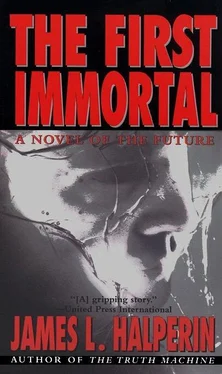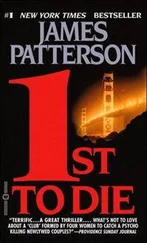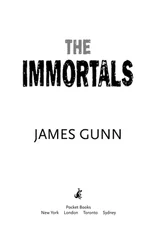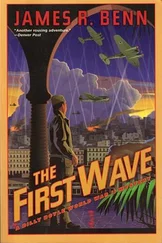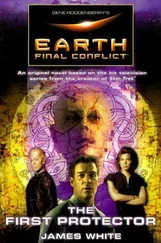Five days later, a national poll suggested that eighty-one percent of Americans agreed with Kevorkian’s goals of suicide legalization and organ donation by default (i.e. unless the donor has specifically requested otherwise), and that most now considered him a hero. The Reverend Pat Robertson had speculated on the phenomenon during an interview with Newsweek: “Kevorkian’s supporters continue to offer uninterrupted beatification, even during this temporary silencing of the doctor’s critics. But God has personally assured me that the man’s popularity will not last.”
On the coattails of Kevorkian’s martyrdom, George’s poll numbers had immediately climbed by six points, drawing the race to nearly even. Then his name appeared on a list of five individuals whom the doctor had invited to speak at his memorial service. The internationally broadcast event had taken place in Detroit on October 7, two weeks after “Doctor Death” himself died. In his brief eulogy that day, George Crane, an architect’s son, had kept to a skillfully drafted line between political opportunism and sincere homage to a man he admired.
One month later, George Crane Jr. managed to win his senate race by a margin of slightly over three percent, much to the present annoyance of the Republican senator from South Carolina. Indeed, “today’s abominable legislation” had been almost entirely the handiwork of “Junior” and his staff.
Chairman John Kerry asked George, “Do you wish to respond to any of Senator Longwell’s comments?”
“Yes, Senator. I respond by calling for a vote,” George answered, leaving his colleagues to their own conclusions regarding the value of Longwell’s arguments. If even one of his allies had been swayed by the pontificating curmudgeon’s attack, George figured his entire view of politics had been a misperception. He was not worried.
The National Death-with-Dignity Licensing Act passed committee by a margin of 14 votes to 11. Apparently, Longwell’s eloquence had been enough to convince his fellow Republican, Senator Jimmy Hayes of Louisiana, to switch his vote in favor of the measure.
July 5, 2005
—A survey commissioned by the United Nations Technology Council shows over half the world’s population, and nearly 98% of American households, are now hooked to the Internet. Personal computer sales worldwide reached 800 million units in 2004, and are expected to exceed 1.7 billion annually by decade’s end as more members of the middle class accumulate multiple PCs.—A march on Washington sponsored by the National Coalition of Churches to protest capital punishment draws an estimated 600,000 demonstrators. Nearly 14,000 convicted violent criminals have been executed nationwide during the first five months after enactment of President Travis Hall’s Swift and Sure Anticrime Bill.—A combination of genetically redesigned viruses and microwave therapy is proven to cure most cancers in humans without major side effects. The regimen, developed by scientists at Johns Hopkins University, converts ordinary cold viruses to cancer-killing “scouts” and “smart bombs.” The viruses invade cancer cells, turning them into viral reproduction factories, eventually either killing the host cell or making it visible to imaging machines. Any residual malignancy is then killed off with image-directed microwaves transmitted from several angles, which heat the cancer to 108°F, killing only targeted tissue. The new therapy will almost certainly revolutionize cancer treatment.
Gary adjusted the image on his seven-foot video display screen, raising the moon 1.72 inches. Then he darkened the sky 5.6 percent. Much better, he thought. He visualized the picture on canvas, and hoped this neoteric design technology wasn’t atrophying his artistic synapses. Then again, how many writers still composed novels without word processors? Of course, he used to do just fine without such silicon marvels. He wondered if he still could.
Then with typical fractal logic, he banished such thoughts into limbo: Yeah, and surgeons had once enjoyed the occasional success without the assistance of electric lighting, too. But once Thomas Edison showed up, they sure as hell hadn’t worried about his invention becoming a crutch that would diminish their talent as doctors.
No wonder they called this the Age of Neuroses!
A delicate “Bee-eep” interrupted his musings.
Raising his wristband, he examined the code on the tiny screen and smiled. “Where are you, Senator?”
“Just finished a speech at the Copley Plaza,” George Crane’s boyish voice answered through the tiny speaker. “Got some time?”
Gary stared at his watch, and wondered if the thing had malfunctioned. Jesus, he’d been at it for seventeen straight hours? If he didn’t take a break soon, he figured he might turn into a paintbrush. “Meet you there in ten minutes, George. Didn’t much feel like working this afternoon anyway.”
Staff members, reporters, and a few of George’s more generous supporters crowded the small hospitality suite, the din of their cocktail party chatter drowning out the latest InterNetwork news on the wall-mounted narrowcast screen. When Gary entered, the noise level dropped noticeably, but then resumed as partygoers decided it wasn’t cool to gawk. Two reporters began to thread their way toward him, but as a whole the crowd feigned nonchalance.
A young staffer reached Gary before the reporters, and ushered him to an adjoining suite, where Senator Crane got up and embraced him warmly.
“You documenting?” George asked. More and more private citizens were leaving their AudioVids recording around-the-clock; the scrambled transceiver signals accumulated in the archives of the central computers as a deterrent to (and evidence of) violent crimes. But few politicians were predisposed to cast their private conversations upon these public waters like digital subpoena bait.
Well-aware of George’s inhibitions when in document mode, Gary decided he preferred the unguarded version of his nephew. “Not anymore,” he said, deactivating his wristband recorder. “Just don’t make me into an accessory after the fact; but feel free to blaspheme, curse, and gossip all you like.”
“Fair enough.” George grinned. “Well goddammit, Uncle Gary, I guess those shit-for-brains savages are gonna own the White House the next coupla decades. Obviously Americans don’t have the patience to fight crime with restraint.”
“You voted for Swift and Sure too, didn’t you?” Gary asked, knowing full well that his nephew had. Gary’s own feelings about the popular bill were similarly mixed: It seemed a barbaric solution to an intolerable problem. Most criminologists agreed that Swift and Sure would save two innocent lives for every (presumably guilty) person executed, but nearly every liberal and right-wing libertarian believed there had to be a better way. To this odd alliance, raw numbers did not equal moral imperative.
But to the ever-widening constituency of crime victims and their families, any such argument seemed absurd.
Rather than executing violent criminals, Gary favored freezing them, a solution Republicans denounced as a waste of money. Even most Democratic legislators supported spending any requisite funds on cryonics for the law-abiding poor instead.
“Held my nose with one hand and raised the other!” George interrupted Gary’s thoughts. “My vote didn’t make a mosquito turd’s difference anyway, so I did the prudent thing, at least according to sixty-four percent of my voters. Plus I figure the lives of twenty thousand convicted violent criminals a year are less valuable than forty thousand potential victims. Not to mention the two million lives a year a rational cryonics policy might save. Which I can hardly push for if I’m not in office.”
Читать дальше
